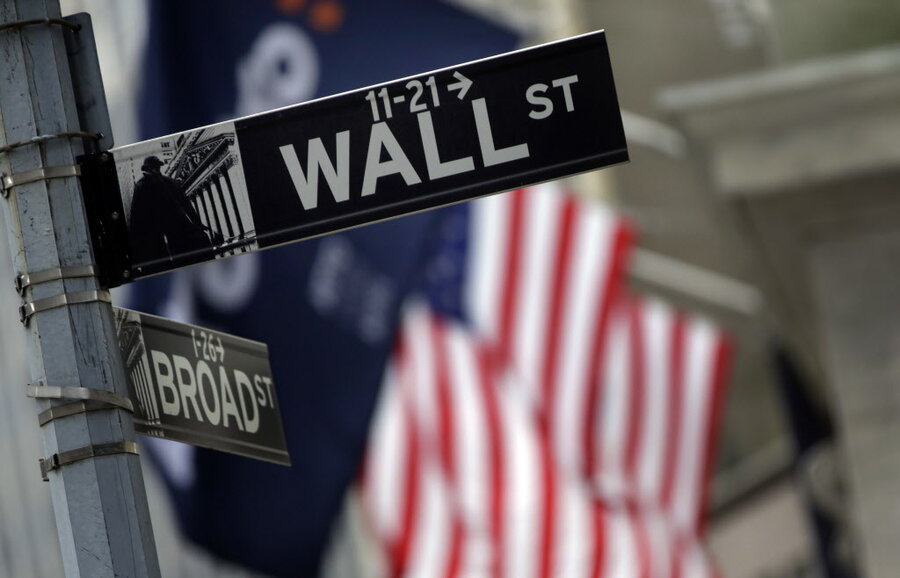When it comes to investing, finding the right asset allocation is what counts
Loading...
What's the most important investing decision you can make? No, it's not researching a promising stock that's ready to soar or identifying a fund manager with a hot hand.
Most important is asset allocation, which explains more than 90 percent of an investment's variability, according to an oft-cited study by Gary Brinson, Randolph Hood and Gilbert Beebower from 1986.
Asset allocation means striking the right balance between stocks and bonds for your risk-and-return expectations.
"You have different pieces of the pie, and all those pieces react differently to different occurrences in the market," said certified public accountant Sheryl Rowling, principal of Rowling & Associates. "Some pieces go up while other pieces go down, so you will still get the average return of market, but you won't have the extreme ups and downs."
Even within the same asset class, there are ways to diversify, since it's hard to know where returns will come from. In stocks, that means owning some small, mid- and large caps, international and perhaps real estate holdings. In bonds, you'll want a combination of government, corporate and high-yield issues.
Balancing risk and return
There are two main factors that go into trying to figure out the right proportion of stocks to bonds (or to any other asset class you might want to include): risk tolerance and time horizon.
"If you're young enough, you can ride out [market losses]," said Jerry Miccolis, chief investment officer of Giralda Advisors and co-author of "Asset Allocation for Dummies."
"Over long periods, the market goes up more than it goes down, but when you're older, you have less time available to do that," Miccolis said.
Risk and time horizon are not the same, however — although they are often lumped together. Young investors with many years ahead of them should be able to withstand periodic market ups and downs over the decades.
But many young investors are risk-averse. One recent survey found that as many as 80 percent are not invested in stocks. By the same token, older investors may have no trouble riding out turbulent markets.
What's more, risk tolerance is something people tend to overestimate when markets are booming.
Rowling recalls many uncomfortable conversations during the late 1990s "tech bubble," with clients and prospects who questioned the wisdom of diversification. After all, stocks, particularly in the technology sector, were booming, and any positions that tempered the risk were a drag on the performance — until the bubble burst.
"Asset allocation and diversification feel good when the market is going down, but they feel bad when the market is going up," she said.
Rowling urges investors to be honest about their real risk tolerance, though she noted that it may take a 2008-like downturn to fully understand it.
Dan Egan, director of research at robo-advisor Betterment, believes investors can avoid emotional swings by investing with goals in mind. If you're worried about volatility in your long-term portfolio, keep other pools of money around with less risky investments that can be easily accessed when you need cash.
"The more we ascribe purpose and meaning to a goal, the more likely we are to bear the risk for that goal," Egan said.
Taking longevity into account
Just how high should your stock allocation be? The old rule of thumb is is to subtract your age from 100 to figure the percentage of stocks that should be kept in your portfolio. Using this formula, a 40-year-old would end up with a portfolio of 60 percent in stocks and 40 percent in bonds.
"By following that adage, you end up being much more conservative than you should," said Rowling.
She argues that even 80-year-olds need heavy doses of stocks, which do better at outpacing inflation than bonds. Today, investment experts suggest subtracting from 110 or 120 to take longer life spans into account.
Recent research from Wade Pfau and Michael Kitces recommends another way to approach asset allocation.
Pfau, professor of retirement income at the American College of Financial Services, and Kitces, director of wealth management at Pinnacle Advisory Group, argued in 2014 that, at retirement, investors should reduce their stocks to just 20 percent to 30 percent of their portfolio. They should gradually raise that allocation throughout retirement, ending at 50 percent to 70 percent in stocks.
By doing that, there's a good probability of maintaining a 4 percent withdrawal rate — and adjusting it for inflation — for 30 years.
Low-return, low-rate world
Your asset allocation strategy should remain constant over time and adjust only because your time horizon narrows. But different market conditions might cause you to make some tweaks.
"We're in an environment where returns are going to be more moderate," said Mark Hamilton, chief investment officer of asset allocation for OppenheimerFunds. At the same time, Hamilton said, interest rates are likely to rise — and, therefore, returns for bonds could fall.
Bonds still provide portfolio stability, but they also carry risk. Corporate bonds and high-yield bonds aren't as sensitive to rising interest rates, so they could mitigate some of the risk of the bond allocation, Hamilton said.
Your Wealth: Weekly advice on managing your money
Similarly, Miccolis of Giralda Advisors also worries about bonds. To lessen the risk of rising rates, he prefers to focus on what he calls low- and mid-volatility stocks, especially those that pay dividends.
The strategy still helps to mute the risk of stocks but without the risk of rising interest rates. "Then, maybe, you need to rely less on the bonds," he said.
Asset allocation strategies abound. No matter which one you choose, keep your emotions in check so you can stick with it through different market cycles. It will likely be your most important investment decision.
This article first appeared at CNBC.







